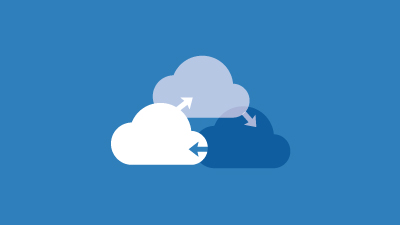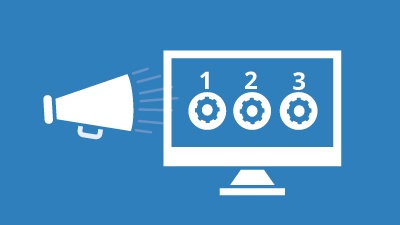You’ve Heard about the Cloud… But What is the Multicloud?

If you’ve been online in the last 15 years, you’ve heard about the cloud, the idea of as-a-service deployment, and the benefits it could provide your business. Knowing this, while you may know about how a cloud deployment differs from an on-premises one, there is still a lot more to learn.
Even if the cloud traces its roots to the 1960s, it has only been in the past decade that it has moved from the fringe to the mainstream. Today’s organizations have been empowered by cloud applications—people are more productive, departments formerly considered cost centers are now profit centers, and users are no longer corralled into an office.
We’ve talked about many of the benefits of the cloud before, but today would like to address a challenge and an opportunity that presents itself when your business moves to implement cloud applications—multicloud.
Journey into the Multicloud
So, what is multicloud? Why does it matter? How can it be a challenge and an opportunity? Read on to learn.
Defining Multicloud
Simple in theory, many define multicloud as the use of two or more cloud computing services.
Per Wikipedia, multicloud refers to the use of multiple cloud computing and storage services in a single heterogeneous architecture. This is also known as a Polynimbus cloud strategy. Techtarget adds that a multi-cloud deployment can refer to any implementation of multiple software as a service (SaaS) or platform as a service (PaaS) cloud offerings, today, it generally refers to a mix of public infrastructure as a service (IaaS) environments, such as Amazon Web Services and Microsoft Azure.
How Multicloud Came to Be
Multicloud strategy came into play during the ‘early adopter’ phase of cloud computing. There were a wide range of reasons customers looked at this strategy.
First was the fear of ‘vendor lock-in’ and reliability. In the early days of the mainstream cloud, multicloud was a way to ensure redundancy at your organization so that in the event a vendor fails, you would be protected. For example, you were to save all of your files to OneDrive and Dropbox, you would be leveraging multicloud storage. If one was down, you still have access.
As the cloud evolved and businesses saw more benefits, organizations began to embrace multicloud as a differentiator—why not use the best application to handle your unique needs?
The Initial Multicloud Challenge—Silos
In the old on-premises world, a business would buy a variety of applications, and then be faced with getting them to talk to each other. Integration was the bane of many an IT department’s existence, as was customizability and adaptability. And while the Cloud can make that easier, you may still wind up in the same silos you had in the on-premises world.
Getting Two Sides to Talk—The Rise of Open Standards
This presented a problem for businesses using multiple SaaS applications—how do you make the two sides “talk” to each other? It left business leaders asking, “What’s the point of moving from on-premises to the cloud if the applications are still just as siloed as before?”
A recent Acumatica blog asked the same question, noting the rise of open standards and protocols as the cure. Author John Roskill looked at the move from Simple Object Access Protocol (SOAP) and Service Oriented Architecture (SOA) to the current standard: REST.
REST stands for Representational State Transfer and provides a common language for APIs, overcoming the bulkiness of SOAP methods. From here, it became easier than ever to make Multicloud SaaS a reality—creating Interoperability among applications.
Embracing Interoperability in Multicloud: Acumatica Cloud ERP
There are many reasons that companies embrace the Multicloud, but only recently has the practice become a reality and businesses who make it happen are reaping the benefits.
At a truly multicloud business, the IT department doesn’t sweat bullets when the CIO shares about a new Cloud application that the ERP system must integrate into. Their CFO has one less major headache to deal with, as the cost effectiveness of the ERP platform enables the business to put their money where it matters most.
At Cloud 9 ERP Solutions, we have spent years helping our clients implement and integrate Acumatica. We understand the challenges businesses like yours face, and as an Acumatica Gold Certified Partner, we have proven that we are among the best in the nation. We invite you to learn more about thriving in a multicloud world by reading the Acumatica series:
- Why Businesses Who Embrace Multicloud Set Themselves Up for Success
- How Multicloud Empowers the Mobile Business
- The Hyper Converged Hybrid Cloud in the Multicloud World
Ready to learn more? Get to know more about our work and contact us for more details.


